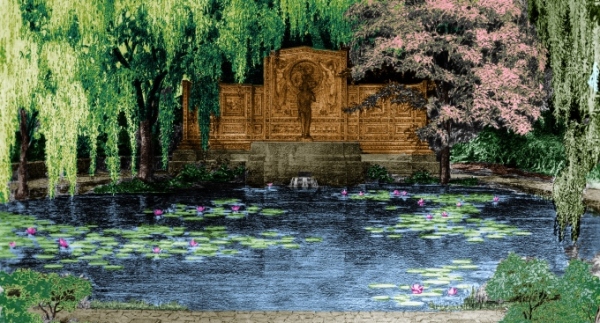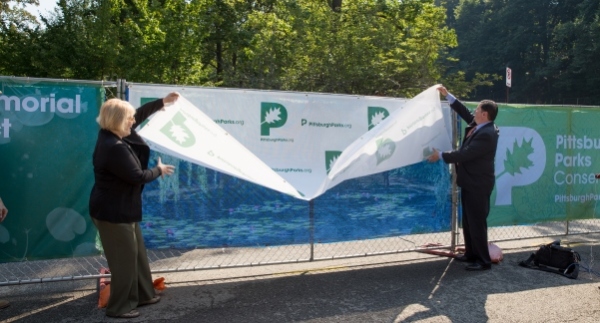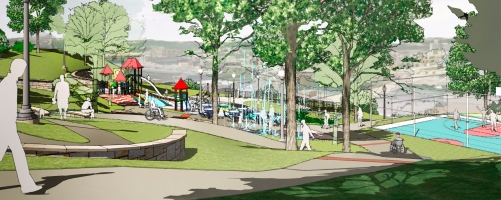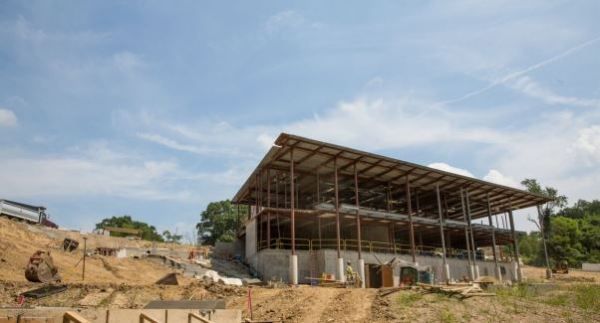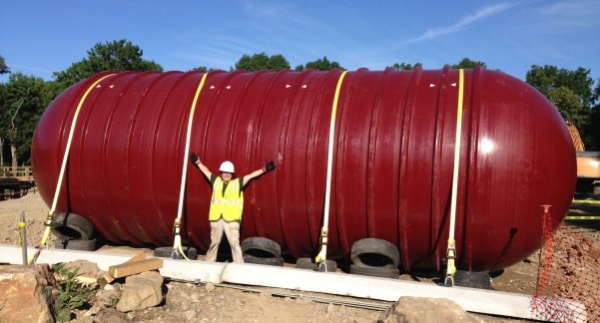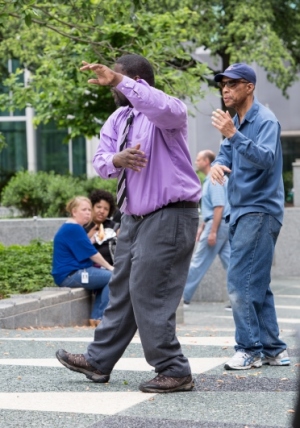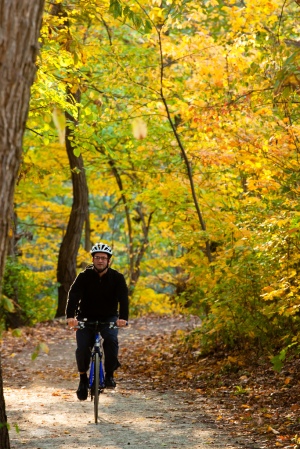An estranged daughter. An international love affair. An heiress disinherited.
Before turning twenty, Mary Schenley’s life read like many a juicy soap opera. And it’s exactly this flair for the dramatic that has us telling her story more than 150 years later.
Recently, 90.5 WESA featured the story of Mary Schenley in a pithy piece featuring our Parks Curator Susan Rademacher. Listen to the full story here, and read below for a piece written by Susan about Mary and the making of Pittsburgh’s civic park.
Mary Schenley and the Making of Our Park System
By Susan M. Rademacher, Parks Curator, Pittsburgh Parks Conservancy
Originally published in Squirrel Hill Magazine
Only two of our city’s four historic regional parks bear a family name. Frick Park is named in tribute to Henry Clay Frick who, upon his death in 1919, gave 150 acres and an endowment to develop and care for a new park. Frick Park is also a symbol of a father’s Iove for his daughter — Frick’s daughter Helen is reputed to have asked her father for the park property as a gift to the children of Pittsburgh. This story is perhaps the better known of the two family-named parks, because the Frick home and museums at Clayton remain to embody the family’s presence and impact on Pittsburgh.

Mary E. Schenley
Schenley Park, on the other hand, wouldn’t exist today if it weren’t for the forgiveness of a father in restoring his estranged daughter to her inheritance. In what became the scandal of the day, Mary Elizabeth Croghan eloped at age 15 from her Long island boarding school with the headmistress’s 43-year-old brother-in-law, Captain Edward Schenley. The newlyweds settled in London and Mary was promptly disinherited. Her father, William Croghan Jr., couldn’t bear the break for long, visiting the young couple and the first of many grandchildren in London a year later in 1843. His forgiveness is especially understandable, given that Mary was the widower’s only surviving child.

William Croghan Jr., father of Mary Schenley
Croghan was born and raised in Louisville, Kentucky, at the fabled country seat Locust Grove. His father was the Revolutionary War Quartermaster General William Croghan, married to the sister of General George Rogers Clark. After the steamboat allowed passage upriver, Pittsburgh became a favored destination of Louisvillians. It was on such an outing that William Croghan Jr. met the prosperous O’Hara family, marrying daughter Mary O’Hara in 1821. The couple started their family in Louisville with son William and daughter Mary Elizabeth born at Locust Grove on April 27, 1826. That same year, William Croghan Jr. wrote his brother-in-law, “I am sick & tired of farming, incessant toil and anxiety & no profit….I am now firmly resolved so soon as my difficulties will allow to make arrangements for moving to Pittsburgh.” Sadly, he would make that move as a widower, his wife Mary having died 1827. In an 1828 letter from William’s sister Ann Croghan Jesup to her sister Eliza Croghan Hancock, Ann writes “Mr. Baldwin in Pittsburgh says Will Croghan is the finest boy he ever saw & Mary is a lovely child it did me good to hear him speak of those poor little children. Mary has quite recovered I sat up with her for two nights she was dangerously ill with Quinsy and inflammation on the Lungs.” Young Will died only a month later.

Picnic House
Father and daughter Mary Elizabeth soon moved to Pittsburgh to make a new life. There, William Croghan Jr. was admitted to the Allegheny Bar. And in August of 1833, Mary writes to her Aunty Lucy Jesup, “Next year Papa is to build his cottage.” This fine Greek Revival-style home atop Stanton Heights was named Picnic House, and contained 22 rooms. Croghan died at Picnic in 1850, but his will preserved the home and furnishings for the use of Mary and her children until 1931, when Mary’s daughter Hermione, Lady Ellenborough, sold the furnishings. The house was demolished in 1955, and its grand ballroom and foyer were transplanted to the University of Pittsburgh’s Cathedral of Learning where they remain a major attraction.
Mary’s inheritance of O’Hara properties from her mother’s estate made her the largest property owner in Allegheny County. Her Pittsburgh landholdings included slums at the “Point” and she was severely criticized as an absentee landlord and exploiter of the wretched by Pittsburgh’s Labor Tribune and the Chicago Daily Tribune in the late 1880s. Her redemption came in philanthropic form. Significant gifts to several important institutions helped shape the cultural, social, and physical landscape of Pittsburgh as we know it today.
Among her major gifts were:
- Land for building the West Penn Hospital;
- Property for the Western Penn Institute for the Blind;
- A large lot for the Newsboys Home;
- A $10,000 subscription toward the purchase of land for Riverview Park; and
- The gift of the Old Block House and adjoining property, (the original Fort Duquesne) to the Daughters of the American Revolution.
While the City of Pittsburgh had been attempting to buy or take Schenley properties for an Oakland park since 1869, it wasn’t until 1889, after Captain Schenley died, that the land for Schenley Park was finally acquired. It was through the enterprising efforts of the “Father of Pittsburgh Parks,” Edward Manning Bigelow (1850-1916), that Mary was persuaded to donate 300 acres, giving an option to buy another 100 acres. Bigelow, named the first director of the new Department of Public Works, envisioned a park system for the city. When he heard that a developer was heading to London to broker a deal with Mrs. Schenley, he promptly dispatched an attorney to get there first and secure a donation. Mary had just two conditions: that the land be used for a park named after her and that it could never be sold. The City soon purchased an additional 144 acres, including the present-day Schenley Plaza and part of the Carnegie Library for much less than its tax value.

Mary E. Schenley Memorial Fountain
Sculpted by Victor David Brenner, with the granite base by architect H. Van Magonigle, the memorial was entitled A Song to Nature and dedicated on Labor Day, September 2, 1918. The memorial was restored and lit in 2008 by the City of Pittsburgh and the Pittsburgh Parks Conservancy. Her invaluable gift is memorialized in the Mary E. Schenley Memorial Fountain at Schenley Plaza.
When she died in 1903, the New York Times observed, “The death of Mrs. Mary E. Schenley, which occurred at her home in Hyde Park, London, was made known in Pittsburg [sic] to-day. Mrs. Schenley has been Pittsburg’s benefactress for many years… Mrs. Schenley was the heroine, sixty years ago, of the greatest romance in Pittsburg’s early history… The affair created an immense social sensation at the time, and the house was preserved for many years in precisely the shape that it was in at the date of the elopement.”
Mary returned only once to Pittsburgh before her father’s death in 1850, and rarely after that. As an asthmatic, the smoky city was not a healthy environment for her. How fitting that our park system was created, in part, to improve the health of our people while changing the image of the city from gray to green. Schenley Park, along with all the parks and greenspaces of Pittsburgh, has more than fulfilled that early promise, thanks in no small part to the spirited benefactress Mary E. Schenley.
Sources:
A century and a half of Pittsburg and her people, by John Newton Boucher; illustrated. Vol. 2.
Frick Fine Arts Library: Schenley Plaza, Schenley Park &Environs, Library Guide Series, No. 11.
Grove Gazette, Winter 2011. Historic Locust Grove, Louisville, Kentucky.
“Fountain of Forgetting: Mary E. Schenley (1827-1903),” by Don Simpson, University of Pittsburgh.
Mandy Dick, “The Storyteller,” Clarksville, Indiana, 502-500-8899.
The New York Times, November 6, 1903.
The History of Pittsburgh: Its Rise and Progress, by Sarah Hutchins Killikelly. B. C. & Gordon Montgomery Co., 1906: Pittsburgh, PA.
